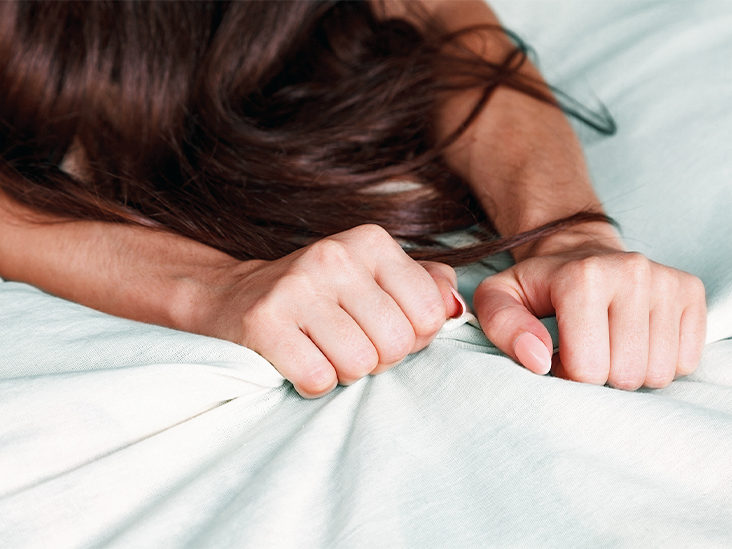No one enjoys experiencing discomfort at any time, especially following an orgasm. Sex should not be a painful experience. Still, for some women and even men, cramps or painful orgasms that happen after sex are common and, this condition is named Dysorgasmia. If you fall in this category of 20% population compromising with painful orgasms, then you might be thinking if it’s normal. The brief explanation is that dysorgasmia is a condition that occurs more commonly than you think it does, and there’s nothing normal about painful sex. The good news is that there are solutions to help you have a pain-free sex life.
What is Dysorgasmia?
If we speak medically, it is a pain syndrome that can happen right prior to, throughout, or following an orgasm. It can become severely painful in the abdomen or pelvic area. Painful discharge happens without any identified reason. The fear of pain can hold people from involving in sexual activity at all, and this can have a serious impact on relationships.
What does Dysorgasmia feel like?
Dysorgasmia mostly appears like period cramps or severe pain in the stomach. Besides period cramps, it is likely to encounter lower back pain. The location of pain might also be linked with the type of orgasm the person is experiencing. Orgasms are classified into three main types.
- Vulvar or vaginal orgasm
- Anal orgasm
- Penile orgasm
Every type of orgasm has its own different causes for the pain. The sensation of pain ranges in intensity and location.
Causes of dysorgasmia
The reason behind the occurrence of dysorgasmia is a combination of physical, and psychological factors. For instance, stress influences everyone differently and can lead to a physical response, like retaining tension in the pelvic muscles, resulting in dysorgasmia. Therefore the physical feeling is real, however, the factor causing it might be emotional trauma and persistent stress.
Some common causes of dysorgasmia are mentioned below:
● Ovarian Cysts
These are little sacks filled with fluid that form on the ovaries. Post-orgasm pain or painful sex can be a result of the bursting of cysts or cysts being twisted during penetration. If the post-orgasm pain occurs frequently on one side of the pelvic region, it might signify an ovarian cyst.
● Underlying Uterine or Bladder Disorder
If a woman is experiencing urinary incontinence or has painful bladder syndrome, she might end up having dysorgasmia. The pain can also be a result of uterine fibroids. Uterine fibroids are small tumors that grow on the uterine lining. Mostly they are benign and also can cause pain following ejaculation.
● Pelvic inflammatory disease (PID)
PID is an extreme infection that affects the reproductive organs of women. It is often caused by sexually transmitted diseases, like chlamydia and gonorrhea. In case you’re encountering painful orgasms, it might be due to PID.
● Endometriosis
Post-orgasm cramps might arise from a distressing health condition named endometriosis. In this condition uterine tissue outgrows from the uterus and affects the fallopian tubes, ovaries, and pelvis tissue. It can cause issues with fertility also.
● Pelvic Floor Dysfunction
One condition that lies among the major causes of painful orgasms is pelvic floor dysfunction. Pelvic floor muscles and ligaments hold up the organs of the pelvis, such as the bladder, rectum, uterus, and prostate. If you are experiencing pelvic pain or post-orgasm pain, it could have developed from numerous conditions that affect the pelvis.
Relaxation and contraction of these pelvic muscles enable you to produce a bowel movement and have sex without pain. Pelvic floor dysfunction occurs when these muscles go out of your control, and they constrict and stress up with no warning. It might cause several chronic pain states, such as:
- Dysorgasmia – Painful orgasms
- Dyspareunia – Painful sex
- Vulvodynia – Burning and stinging discomfort in the vulva
- Vaginismus – Involuntary contraction of the pelvic muscles
- Vaginal atrophy – Painful and dry vaginal tissue
Pelvic floor dysfunction can also result in incontinence and other conditions.
Treatments for Dysogasmia
Dysorgasmia impacts everyone in a different way, and that is why the treatments involve different choices and sometimes a combination of them. A natural and effective solution is a warm bath or using a hot water bottle if the pain occurs. But, you will definitely need to seek medical consultation if the issue persists.
Medical evaluation
The initial action that needs to be taken is to arrange an appointment with your doctor. The meeting would normally include a complete evaluation of the patient’s medical history and conducting a physical exam. Your physician needs to identify the underlying reason for dysorgasmia.
NSAIDs
Easily available over-the-counter medicines can be used to ease the pain for a short term. Dysorgasmia can usually be relieved the same way we heal period cramps, such as applying heat from a heating pad or over-the-counter painkillers including non-steroidal anti-inflammatories, like paracetamol or ibuprofen.
Sex therapy
Sex therapy may assist determine the genesis of psychic and bodily pain. Sometimes people grow up in a sex-negative environment, have encountered a traumatic experience, or feel shame around sex. All of these factors can make an orgasm become painful. And it’s vital that in case your orgasms result in pain, you do not dismiss this issue as just in your head. Your state can be due to a pelvic floor dysfunction combined with emotional trauma.
